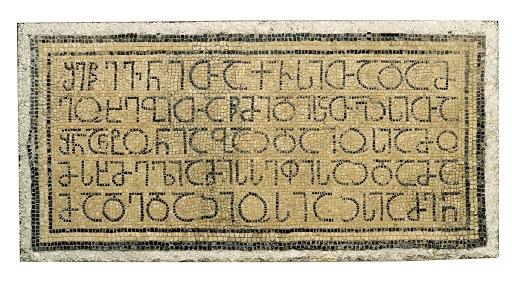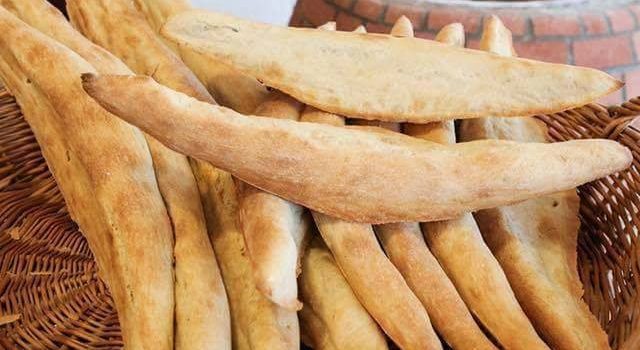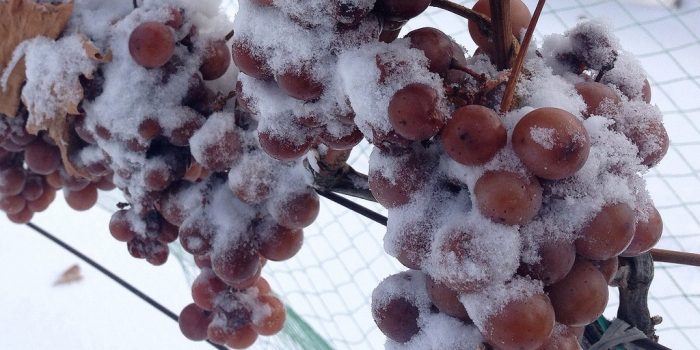Georgia plans to increase wine exports to Japan
Georgian Agriculture Minister Levan Davitashvili and President of Japanese alcoholic drinks consultation company ASIA AC Wataru Iwamoto met yesterday to discuss the prospect of exporting more Georgian wine to the Japanese market.
Wataru Iwamoto stated that Georgian wine is in high demand on the Japanese market after the ‘Georgia – Homeland of Wine’ exhibition was held.
Minister Levan Davitashvili said he hopes the partnership with the Japanese market will be fruitful.
The employees of the Asia AC company will have a two-day tour in Tbilisi and Kakheti region to taste different varieties of Georgian wine.
Source: www.agenda.ge, photo source: www.agenda.ge
Ajarian Khachapuri at Argentinian Restaurant
Ajarian khachapuri, one of the most outstanding dishes of the traditional Georgian cuisine, has moved beyond the borders of Georgia and is quite successfully establishing itself on the foreign gastronomic markets. It first became popular in the USA, and has just recently appeared on the menu of a prestigious Argentinian restaurant chain, Almacén de Pizzas.
Visitors to the restaurant will have a chance to taste three varieties of Ajarian khachapuri, prepared with four different types of cheese. The options are to include bacon and cheddar, as well as spinach and blue cheese.
The price for discovering the taste of the Georgian gourmet pleasure amounts to 499 pesos, which is about $12.
Khachapuri is Georgian bread stuffed with melted cheese and represents an inseparable part of the Georgian festive table. The Ajarian khachapuri is a boat-shaped khachapuri topped with the raw egg and butter before serving.
source: www.georgiatoday.ge, By Ketevan Kvaratskheliya
Georgian restaurant ‘Natali’ in Spain
There are more and more Georgian restaurants appearing abroad. While the locals in foreign countries enjoy Georgian cuisine, Georgian restaurants usually serve as a gathering place for Georgina emigrants.
Otar Loliashvili along with his wife have been living in Spain for about 10 years. Two years ago, they opened a Georgian restaurant ‘Natali’. The restaurant is located near Valencia and has already become a popular place. According to the owner, the locals especially love Mtsvadi (grilled meat skewers), Adjarian da Megruli Khachapuri (Georgian cheese bread). Otar Loliashvili says that as it is impossible to find cheese for Khachapuri in Spain, they have to produce it by themselves.
Besides, ‘Natali’ is a meeting point for Georgian emigrants in Spain. It has become the emigrants’ tradition to gather and have fun together in the restaurant. According to Loliashvili, they did not face any obstacle while starting a business in Spain. They only had to have the necessary documents in order. He says that the only challenge in Spain is high taxes and prices for products. However, their restaurant is cheaper than other restaurants in the country.
Source: www.Georgianjournal.ge, Photo:Georgianjournal.ge
Georgian Alphabet is Now on Google Arts and Culture’s Platform
Google Arts and Culture is an online platform created by the Google Cultural Institute that enables people to explore collections from around the world. The Georgian alphabet has recently been added on it and people can now enjoy the story of the century-old Georgian alphabet.
The three alphabets are presented: the Asomtavruli Alphabet, the Nuskhuri Alphabet and the Mkhedruli Alphabet. The page showcases photos of the oldest Georgian inscription from the fifth century as well as photos of old manuscripts. It explains the evolution of the alphabet and its particularities.
The site does honor to the UNESCO-recognized Georgian alphabet. It is a great tool to have precise and relevant information on the historical development of Georgia’s most precious cultural heritage.
To visit the webpage: https://artsandculture.google.com/exhibit/aAJSEzi41T85Jg?
Source: Georgiatoday.ge; By Gabrielle Colchen
Photo Source: artsandculture.google.com
Wives of Ambassadors Enthusiastic about Mastering Georgian Dance
Georgian dance is one of the most significant and unalienable parts of the country’s diverse and colorful culture. Each region in Georgia has its own unique dance which perfectly portrays the character and outstanding features of the Georgian people.
Georgian dance is known in different parts of the world among different nations. However, it is quite interesting that the guests of Georgia are so enthusiastic about mastering the country’s traditional national dances.
The wives of the Ambassadors to Georgia expressed interest in learning Georgian national dance and have begun to take classes in it.
The master-classes are led by a professional dancer of the National Georgian Ballet Sukhishvili (also known as Sukhishvilebi), Tea Darchia.
The idea of taking courses of Georgian dance was initiated by the spouse of the Ambassador of Sweden to Georgia. She motivated other representatives of the diplomatic corps. The ladies state these classes help them get a sense of the Georgian soul.
Aside from a love of Georgian dance and music, the spouses of the ambassadors have been united for a much more important reason. With the given initiative, they express solidarity to women with breast cancer.
The future plans of these ladies also involve giving a concert.
Source: Georgiatoday.ge, By Ketevan Kvaratskheliya
The World Talks about Georgian Shoti Bread
Georgian cuisine is well-known across the world. Various websites such as FoodAtlas or Culinary Backstreets have devoted multiple articles to the traditional Georgian dishes. One of the most celebrated Georgian foods is Shoti Bread (in Georgian “Shotis Puri”). This canoe-shaped bread is distinguished not only by its taste but also the way it is traditionally baked.
“It is incredibly hard work. Marekhi’s day begins at 4:30 a.m., when she and her co-worker Nona Khatiashvili (no relation) start making giant tubs of dough in the back of the low-ceilinged bakery, ready to be baked into the long, flat loaves of bread that Georgians call shoti. It’s a ritual of daily life here.
As they turn and press the heavy mix of flour, water, salt, and yeast, it is almost up to their elbows.
Everything is done by hand. That’s the special ingredient,” reads Culinary Backstreets’s article about the bread.
Shoti bread is a flat bread soft inside and crispy outside. It is baked vertically in a sunken stone oven (tandoori) known as “Tone” in Georgian. Traditionally in order to bake Shoti all you need is a mix of flour, water, salt, and yeast. After mixing you should knead the dough by hand.
“The freshly baked bread is then placed on wooden racks to cool, and it is usually sold wrapped in a sheet of paper.
Shotis puri is consumed as an everyday bread, but it is especially popular during festive events such as Easter, Christmas, and birthdays,” TasteAtlas about Shoti bread.
Source: Georgianjournal.ge
Georgian Wines Evening Held in Italy
Tasting of Georgian Qvevri wines at an event titled “The Beginning of Everything” was offered in Italy in cooperation with the Embassy of Georgia in Italy, the Rome Sommelier Association ‘Divinamente Roma’ and Georgian National Wine Agency (NWA), the Ministry of Foreign Affairs of Georgia reports.
Konstantine Surguladze, Ambassador Extraordinary and Plenipotentiary of Georgia to Italy, addressed the audience with a welcome speech, emphasizing the special cultural significance of Georgian winemaking and speaking about Georgian history, traditions and culture.
At the event, representative of the NWA Giorgi Tevzadze introduced the ancient history of Georgian wine and winemaking technology in Qvevri. Four different kinds of Qvevri wine were presented for tasting. Together with Georgian wines, visitors tasted Qvevri wines made by Italian and Greek winemakers, including ‘Ribola’ by Yosko Gravner, a prominent Italian winemaker and pioneer of Georgian Qvevri and Georgian technology in Europe, which was introduced by his daughter Matteia Gravner.
The event was attended by sommeliers, Italian wine-producing companies and media representatives.
Source:Georgiatoday.ge, By Mariam Merabishvili
The Guardian: Khinkali best eaten with alcohol
The Guardian published an article about the traditional Georgian dish Khinkali in 2017. The article reads about its history, art of consuming the dish and its types as well.
Georgians were ruled by Greeks, Romans, Iranians, Arabs, Byzantians, Mongolians, Ottomans, and Russians over the years. All of them brought their cuisine and ingredients into Georgia. Georgia managed to incorporate all the new ingredients and meals to create an identity for Georgian cuisine. When you eat Georgian food, you do not think it is Mongolian or Chinese but Georgian. Khinkali is believed to be brought by Mongolian warriors in the 13th century.
The dish is similar to the Taiwanese soup dumpling, xiaolongbao. The Georgian dumplings are filled with meat and spices (mushrooms, potatoes, cheese can be used instead of meat), then traditionally twisted into a knot at the top. Regional differences influence the fillings and every part of Georgia has their distinctive variety. For example, in the mountainous regions, the most traditional filling is lamb. The most frequent variety (often served in Georgian restaurants) throughout entire Georgia is a mixture of pork and beef.
Khinkali are traditionally the food of shepherds in the Tusheti and Pshavi regions mountainous regions of northern Georgia.
“Locals are skilled in the art of extracting the hot juices in one bite, cautiously using the top knot of dough as a handy grip. Plates strewn with discarded knots sit on cafe tables.”
The founder of Kartveli Tours (tours in Georgia) Irakli Shengelia says to the Guardian that both beer and vodka goes well with the dish. He explains the Georgian term Chakiduli meaning “a shot of vodka followed by a beer”.
Source: Georgianjournal.ge
Georgian Food Named as Cuisine of the Year by Af&co
Af&Co has named Georgian food as Cuisine of the Year and Khachapuri as its dish of the year in its 2019 Trends Report.
Based in San Francisco, af&co is a leading restaurant and hospitality consulting firm. Their report identifies the hottest key trends in restaurants, food and beverage, and hospitality marketing.
The Ajarian dish Khachapuri has been awarded the title of Dish of the Year thanks to its tasty combination of cheese and egg, and its instagramability. It’s already being served in some restaurants in the US, including Supra in Washington DC, Cheeseboat in Brooklyn and Barbounia in New York.
The Trends Report was the eleventh edition published by af&co. Founder Andrew Freeman noted that “the hospitality industry is leading the charge in creating the world we want to live in. Restaurants and hotels are gathering places for people to connect, creating the perfect grounds for people to come together, get personal, and embrace forward-thinking ideas.”
By Amy Jones, Source: Georgiatoday.ge
Photo source: reddit.com
Georgia – ideal climate conditions for Icewine
Georgia is widely considered as a cradle of wine. It is the country where the earliest evidence of grape wine-making was found. Telltale chemical signs of wine in the pottery jars, discovered in two Neolithic villages (called Gadachrili Gora and Shulaveris Gora about 50km (30 miles) south of Tbilisi, the capital of Georgia) dates back 5,980 BC. Previously, the earliest evidence of grape wine-making had been found in the Zagros Mountains of Iran and dated to 5,400-5,000 BC.
Icewine is believed to originate from Germany in the 1700s when freezing weather preceded the harvest and still, winemakers pressed the frozen grapes fermenting the juice to a sweet wine. The winemakers were impressed with the result and they decided to continue with the technique. The type of wine gradually evolved into a classical winter wine and spread throughout the world.
Georgia is one of those countries producing and exporting Icewine. The idea of producing Icewine in Georgia was initiated by one of the German consultants working at Marani, the only producer company of the wine in Georgia. Observing climate conditions in Georgia, the consultant was certain that the production would succeed.
Georgia is characterized by warm summers and cold winters that are ideal conditions for Icewine. Grapes are ripened in summer and frozen in winter. In order to make Icewine, Georgian winemakers do not harvest grapes until freezing weather sets in. Then, grapes are left to freeze naturally on the vine. After the water contained in grapes are frozen, the crops are harvested and pressed. What is produced from the frozen grapes is a small amount of sweet juice without any water.
As the amount of juice squeezed out of the frozen grapes is not impressive and a special pressing technology is required, the production of the wine is not massive and the price is quite high. Besides, it is focused on a limited number of consumers who love sweet wine.
Source: Georgianjournal.ge









